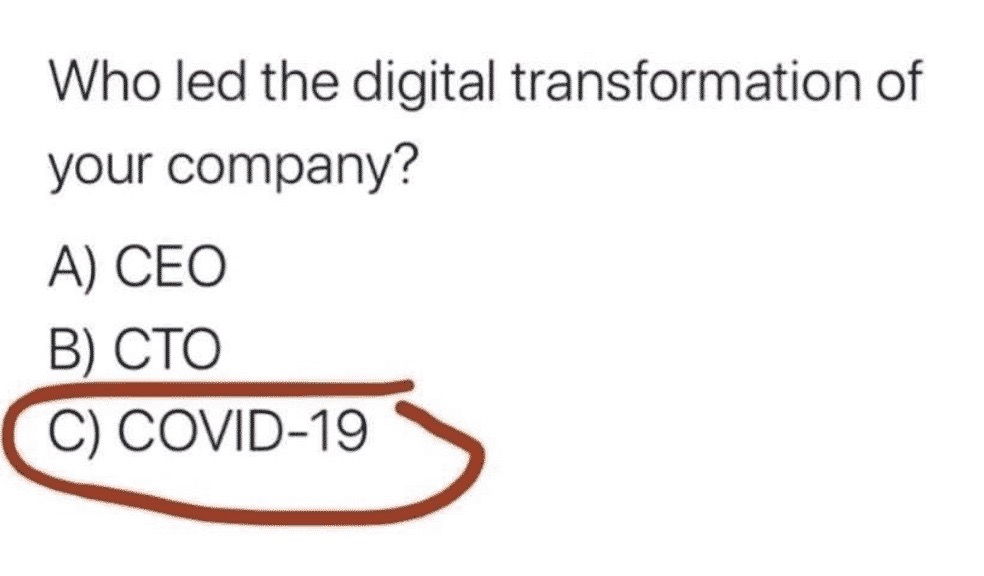How to start your Digital Transformation journey with quick results
It’s not a secret to anyone that Covid-19 has reshaped the way businesses operate worldwide.

Like any other industry, the impact on financial services has been profound.
Covid-19 showed us that the digital transformation everyone has been discussing for years was, in many cases, still just a discussion. Progress was slow at best, and most businesses were still lost in their manual and inefficient processes. During the first months of the pandemic, a common meme on Social Media asked: “Who led your digital transformation?” Three options followed: A. CEO; B. CIO; or C. Covid-19. I don’t need to say which one was chosen… And all joking aside, in reality, it’s probably the harsh truth.

What has become paradoxical is that the pain felt in operations in the last months has become the silver lining of the crisis.
"Covid-19 has become the accelerator of digital transformation."
John Doe Tweet
The recovery, as we move onto the next normal, is digital, as highlighted in McKinsey’s recent report: The Next Normal. The recovery will be digital.
For every new client, you complete a checklist by printing out (or “de-digitizing”) your digital word document… You perform your manual checks and obtain physical signatures. When finished, you “re-digitize” the checklist by… scanning it of course! Working this way just keeps you in the digitization loop, which is even more work than just doing it physically.
You run your checklists in a spreadsheet and instead of printing it, you fill it in with an “X” in Column C for each control done. When finished, you save this spreadsheet and email it to everyone. They all send back their versions of the same document, creating a big confusion and most likely, errors. Now, this is a digitalized process, but still not digital transformation. You are performing a task digitally, but it is still not very efficient or effective, and you are not really transforming the business yet.
You have an automated process to run checklists. The system performs lots of automated controls by comparing data with rules, which is something a machine is much better at than a human. The process involves the right people at the right time and records when they have performed their controls. At this point, we can speak about a digitally transformed process. And it does not need to be as sophisticated and dramatic as many people often present it. You don’t need artificial intelligence or huge machine learning algorithms to get started with this. In essence, it is the same checklist, but we went from paper to digital and from digital to something that is digitally enabled and transformed.
Answer: Remote working.
Answer: With remote working, it is difficult to do and monitor our controls.
Question: What kind of controls? All controls? Any specific controls?
Answer: Mostly, the controls related to client onboarding.
Question: What is the impact of that?
Answer: We don’t know what the status of the onboarding controls is, so we cannot monitor if the onboarding is going well. The clients are growing impatient because we cannot give answers or estimates on when we can go live.
How do you currently onboard a client?
What do you need to know about the client?
What do you need to control?
What information do you need to have?
What are the different counter-parties?
After mapping all of this, the second step is to brainstorm and build a logical flow, using a piece of paper or whiteboard, no technology involved. Once this is done, you iterate through the process a couple of times until you end up with a solid sketch of the process. With the right people in the room, it shouldn’t take more than two hours to design it.
TLDR: